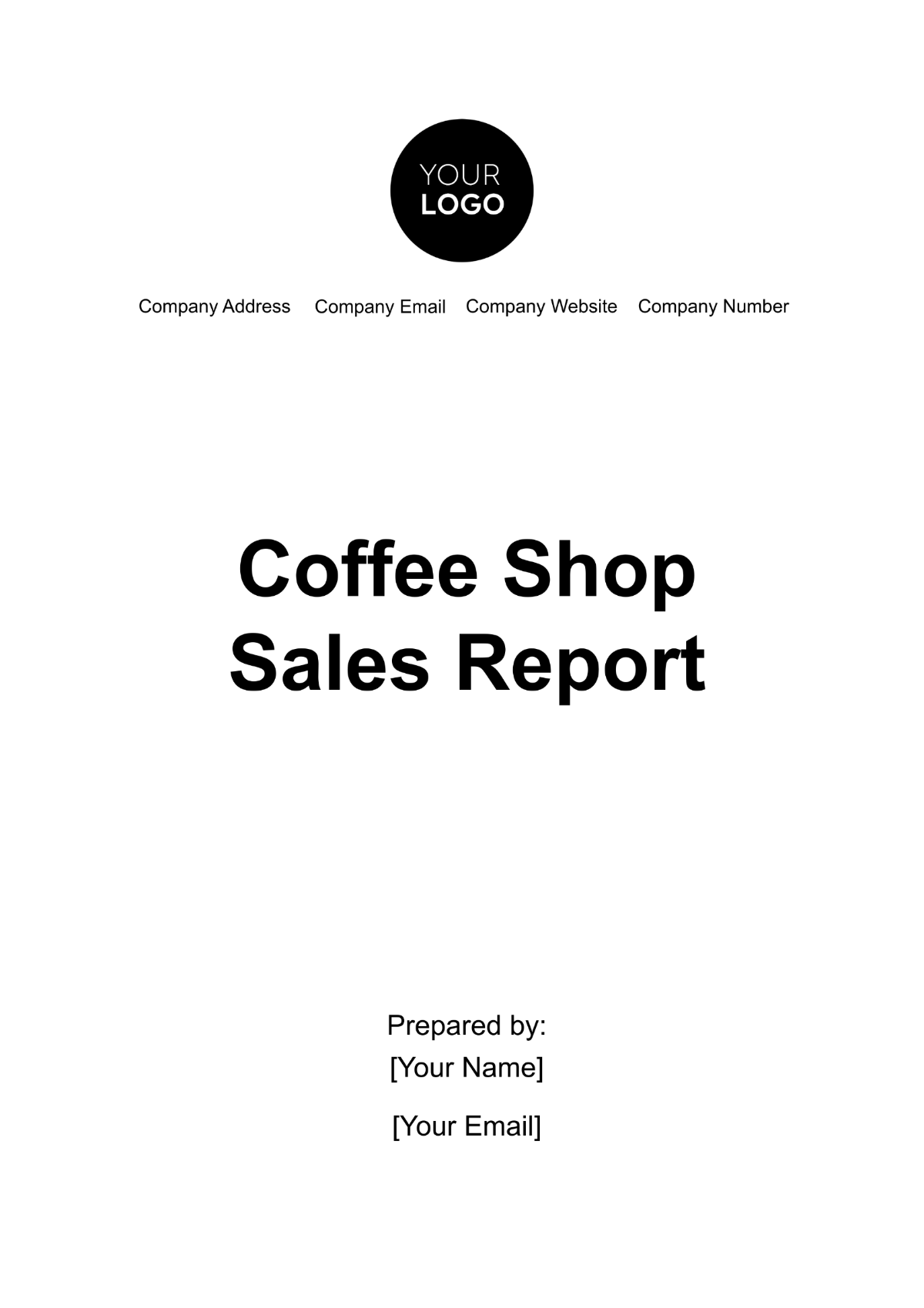E-Commerce Report
1. Introduction
The e-commerce sector has undergone rapid transformation over the past few decades. By 2060, the landscape is characterized by vast technological innovations, dynamic shifts in consumer behavior, and the emergence of new business models that have collectively shaped a robust digital economy. In this report, we will take a deep dive into the evolution of e-commerce, its current state, and future projections. [Your Company Name] aims to leverage these insights to strategically navigate the evolving market and remain competitive.
1.1 Scope of the Report
This report provides an analysis of the global e-commerce industry’s performance from 2050 to 2060. It evaluates key trends, market drivers, consumer behavior, and technological advancements shaping the digital marketplace. The scope includes a comprehensive examination of current market dynamics, future projections, as well as specific strategies that can be employed by businesses, including [Your Company Name], to thrive in this constantly evolving environment.
The main areas covered are:
Market Overview: A detailed look at the current state of global e-commerce.
Technology Impact: The role of emerging technologies such as artificial intelligence (AI), augmented reality (AR), and blockchain in reshaping e-commerce.
Consumer Trends: An in-depth exploration of shifting consumer behaviors and how businesses must adapt.
Future Projections: Market growth estimates, future challenges, and strategic recommendations for 2060 and beyond.
1.2 Objective
The primary objective of this report is to provide actionable insights to stakeholders of [Your Company Name], enabling them to make well-informed decisions in a highly competitive market. We aim to equip decision-makers with the necessary knowledge to optimize business strategies, enhance customer experiences, and effectively respond to emerging challenges in the e-commerce space.
By understanding the key performance indicators (KPIs), trends, and future growth areas, [Your Company Name] will be better positioned to expand its market share and profitability over the coming decades.
2. Global E-Commerce Market Overview
As of 2060, e-commerce has reached a global valuation of approximately $[15.8] trillion, and it continues to expand rapidly due to a range of factors. Technology, demographics, and new shopping habits are driving this growth, and the market is expected to continue evolving as digital platforms become further integrated into the global economy.
2.1 Global Market Size
The global e-commerce market has witnessed explosive growth since the early 2050s, with projections indicating that the market will reach an astonishing $[50] trillion by 2060, growing at an average annual rate of [9.3]%. This growth is largely fueled by continued advances in technology, the expansion of online retail infrastructure, and a shift in consumer purchasing behaviors towards convenience and personalized experiences.
Table 2.1: Global E-Commerce Market Size (2025-2050)
Year | Market Size ($ Trillions) |
|---|---|
2050 | $19.5 |
2055 | $25.8 |
2060 | $39.1 |
The market's growth is not limited to one region. The Asia-Pacific region, in particular, has experienced exponential growth due to a large, young, tech-savvy population and expanding internet infrastructure. China, India, and Southeast Asia are expected to see a compound annual growth rate (CAGR) of [13]%, which will surpass the growth rates of mature markets like North America and Europe.
2.2 Regional Distribution of E-Commerce
Currently, the top three regions driving e-commerce sales globally are North America, Europe, and Asia-Pacific. However, emerging markets in Latin America, the Middle East, and Africa are experiencing fast-paced growth. The following table shows the projected market share of each region by 2060.
Table 2.2: Regional Distribution of Global E-Commerce (2050-2060)
Region | 2050 Market Share (%) | 2060 Projected Market Share (%) |
|---|---|---|
North America | 22.4 | 18.5 |
Europe | 18.6 | 16.2 |
Asia-Pacific | 42.3 | 55.6 |
Latin America | 5.2 | 7.8 |
Africa | 3.5 | 4.5 |
These projections underscore a shift in the balance of global e-commerce dominance, with Asia-Pacific taking a larger share due to increasing urbanization, internet access, and mobile commerce adoption.
2.3 Market Drivers
Several factors are driving the growth of e-commerce, which can be summarized as follows:
Mobile and Internet Penetration: The global mobile internet user base is expanding at an average rate of [8]% annually, bringing more consumers online, particularly in developing countries. In 2060, approximately [80]% of global e-commerce transactions are expected to come from mobile devices.
Digital Payment Systems: Technologies like blockchain, digital wallets, and biometrics are revolutionizing how payments are processed. The introduction of secure, fast, and frictionless payment systems has encouraged consumer confidence in online shopping.
Consumer Preferences for Convenience: There is an increasing preference for online shopping due to its convenience, 24/7 availability, and home delivery options. Consumers also desire the ability to shop from anywhere, using mobile apps and smart devices.
Logistical Advancements: The use of AI, drones, and autonomous delivery systems is significantly improving the speed and accuracy of deliveries, which in turn is encouraging more online purchasing.
3. E-Commerce Consumer Trends
Understanding the evolving preferences of consumers is crucial for companies aiming to thrive in the digital economy. Today’s shoppers expect more personalized, seamless, and engaging shopping experiences. This section outlines key trends shaping e-commerce consumer behavior in 2060.
3.1 Personalization and Consumer Experience
Personalization continues to be a major driver of e-commerce success. Consumers now expect their shopping experiences to be customized to their individual needs and preferences. Retailers who can provide personalized product recommendations, tailored marketing, and individualized offers are more likely to retain customer loyalty.
AI-Powered Recommendations: In 2060, it is estimated that [75]% of e-commerce purchases will be influenced by AI-driven product recommendations. In 2050, the market for AI-driven personalization technologies was worth approximately $[350] billion and is projected to grow at a CAGR of [11]% until 2060.
Voice Commerce: As voice assistants like Amazon Alexa, Google Assistant, and Apple Siri become even more integrated into daily life, the share of e-commerce transactions through voice-activated devices is expected to surpass [30]% by 2060. This shift is likely to be driven by the growing adoption of smart home devices.
Table 3.1: Growth of Personalized E-Commerce Market (2025-2050)
Year | Market Size ($ Billions) |
|---|---|
2050 | $350 |
2055 | $490 |
2060 | $740 |
3.2 Mobile Shopping
Mobile shopping continues to grow in prominence, driven by the increasing penetration of smartphones and the availability of mobile-optimized shopping apps.
Mobile E-Commerce Growth: In 2055, mobile commerce accounted for approximately [55]% of total e-commerce transactions. By 2060, this figure is expected to increase to [80]%, reflecting the rise of mobile-first consumers.
Augmented Reality (AR): Consumers are increasingly using AR to enhance their shopping experiences. In 2060, over [40]% of online retailers will have integrated AR into their apps or websites, allowing users to visualize products in their environment before making a purchase.
3.3 Subscription-Based Models
Subscription-based services have gained popularity, particularly in industries like beauty, health, entertainment, and food delivery.
Growth of Subscriptions: In 2060, the global subscription e-commerce market is projected to be worth $[1.5] trillion, representing a significant portion of overall e-commerce sales. These services provide customers with the convenience of regular deliveries, personalized options, and discounts.
Table 3.2: Subscription-Based E-Commerce Market (2050-2060)
Year | Market Size ($ Trillions) |
|---|---|
2050 | $0.25 |
2055 | $0.55 |
2060 | $1.10 |
4. Technology Impact on E-Commerce
Technology continues to be the backbone of the e-commerce industry. As advancements in artificial intelligence, machine learning, augmented reality, blockchain, and logistics continue to emerge, businesses that successfully leverage these technologies will have a competitive edge.
4.1 Artificial Intelligence and Automation
AI and automation are transforming how e-commerce businesses operate, from personalized recommendations to automated customer service and optimized inventory management.
AI in Customer Service: AI-powered chatbots and virtual assistants are improving the efficiency of customer service departments, enabling round-the-clock support and faster response times. In 2050, approximately [80]% of customer service interactions will be handled by AI systems.
Automation of Fulfillment: Automated warehouses, powered by robots, drones, and AI, are revolutionizing the fulfillment process. This automation reduces costs and improves delivery speed, with AI systems making real-time inventory management decisions.
4.2 Blockchain Technology
Blockchain is being adopted by e-commerce platforms to enhance security, transparency, and customer trust.
Secure Payments: Blockchain technology ensures that transactions are secure, transparent, and immutable. By 2060, [Your Company Name] may fully implement blockchain for all online transactions, reducing fraud and enhancing customer trust.
Table 4.1: Adoption of Blockchain Technology in E-Commerce (2050-2060)
Year | Blockchain Adoption |
|---|---|
2050 | 15% |
2055 | 30% |
2060 | 60% |
5. Future Projections and Opportunities
The e-commerce market of 2060 will be vastly different from what we see today, with emerging technologies and evolving consumer behaviors driving a seismic shift. By analyzing future trends and identifying the key areas for growth, businesses, including [Your Company Name], can align their strategies to harness new opportunities effectively.
5.1 Projected Market Growth
The global e-commerce market is expected to witness an unprecedented growth trajectory in the coming decades, fueled by digital transformation and the increasing adoption of cutting-edge technologies. By 2060, the market size will expand from $[19.5] trillion in 2050 to $[50.0] trillion, growing at a compound annual growth rate (CAGR) of approximately [9.3]%. This remarkable growth will be driven by several factors:
Global Internet Penetration: As internet access becomes more ubiquitous, especially in developing regions, new consumers will enter the digital marketplace. The number of internet users worldwide is expected to exceed [8] billion by 2060, up from [4.5] billion in 2025. With this influx of users, e-commerce platforms will have an expanded global reach, opening up new revenue streams.
Technological Innovation: Technologies like artificial intelligence (AI), machine learning (ML), blockchain, and augmented reality (AR) will reshape the e-commerce experience, making it more personalized, secure, and immersive. These advancements will provide e-commerce companies with the tools to enhance customer service, optimize supply chains, and deliver more personalized shopping experiences.
Shifts in Consumer Behavior: As consumers demand greater convenience and tailored experiences, e-commerce will move beyond simple online transactions. The marketplace of 2060 will likely incorporate subscription models, voice commerce, and AI-driven personal assistants as standard tools for shopping.
Table 5.1: Global E-Commerce Projected Market Growth (2050-2060)
Year | Market Size ($ Trillions) |
|---|---|
2050 | $19.5 |
2055 | $25.8 |
2060 | $39.1 |
This growth is not restricted to a single region but is instead being driven by a broad, global transformation. While mature markets like North America and Europe will continue to contribute a significant share of e-commerce sales, emerging markets, particularly in Asia-Pacific, Africa, and Latin America, will play a pivotal role in expanding the total market.
5.2 Key Areas for Investment
To capitalize on the projected growth, [Your Company Name] should focus on investing in several key areas that are poised for substantial development. These areas not only align with the market trends but also offer opportunities for differentiation and competitive advantage.
5.2.1 Artificial Intelligence and Data Analytics
The role of AI in e-commerce is expanding exponentially. As AI technologies evolve, they will have a significant impact on customer experience, business operations, and decision-making. By investing in AI and machine learning, [Your Company Name] can create highly personalized shopping experiences, improve supply chain efficiencies, and optimize pricing strategies.
Personalization at Scale: AI can provide tailored recommendations based on consumer preferences, past behaviors, and even predictive analytics about future purchases. According to industry trends, [Your Company Name] could see up to [60]% higher conversion rates by incorporating AI into its product recommendations.
Improved Operational Efficiency: AI can automate various aspects of e-commerce, including inventory management, customer service (through AI-driven chatbots), and logistics. Automation can cut costs, reduce errors, and enhance speed.
5.2.2 Augmented Reality (AR) and Virtual Shopping
AR will become a standard feature for many e-commerce platforms by 2060. The technology enables customers to virtually "try on" products, visualize items in their homes, and explore 3D versions of products, creating a more engaging and interactive shopping experience.
Visualizing Products: AR applications allow consumers to see how furniture fits in their homes, how clothing looks on their bodies, or how makeup would appear on their skin. This immersive shopping experience is expected to reduce return rates and increase customer satisfaction.
Virtual Try-Ons and Fitting Rooms: Retailers like [Your Company Name] can adopt AR to allow customers to try products virtually before purchasing, reducing the friction of traditional shopping processes. In 2060, the AR-enabled e-commerce market is expected to be worth approximately $[1.7] trillion.
5.2.3 Blockchain for Enhanced Security and Transparency
Blockchain technology will play a critical role in improving security, transparency, and trust in e-commerce transactions. By implementing blockchain, [Your Company Name] can offer more secure payment systems, eliminate fraud, and provide consumers with full traceability of their purchases.
Decentralized Transactions: Blockchain allows for direct, peer-to-peer transactions without the need for intermediaries, reducing transaction costs and time delays.
Supply Chain Transparency: Blockchain can also provide customers with a transparent view of the product’s journey from manufacturer to retailer, allowing consumers to trace the origins of goods and ensuring ethical and sustainable sourcing.
Table 5.2: Projected Growth of Key E-Commerce Technologies (2050-2060)
Technology | 2050 Market Size ($ Billions) | 2060 Projected Market Size ($ Trillions) |
|---|---|---|
Artificial Intelligence | $350 | $3.5 |
Augmented Reality | $55 | $1.7 |
Blockchain | $5 | $1.0 |
6. Strategic Recommendations for [Your Company Name]
As the e-commerce market continues to grow, [Your Company Name] must remain agile and proactive in adopting innovative strategies to maintain its competitive advantage. Based on the future trends and opportunities discussed earlier, the following strategic recommendations are essential for the company’s long-term success:
6.1 Embrace Artificial Intelligence for Personalization
Personalization is no longer a luxury but a necessity for e-commerce success. AI-driven personalization can be used to:
Enhance Product Recommendations: By leveraging machine learning, [Your Company Name] can offer highly targeted product recommendations, driving conversion rates and increasing average order value.
Optimize Customer Support: AI-powered chatbots and virtual assistants can provide 24/7 support, answer frequently asked questions, and resolve common issues instantly, improving overall customer satisfaction.
6.2 Develop a Mobile-First Strategy
Mobile commerce continues to grow at an accelerated pace. By 2060, mobile-first strategies will be crucial for e-commerce businesses aiming to capture the growing mobile shopper segment.
Responsive Design: Ensuring that websites and applications are mobile-optimized will improve user experience and reduce bounce rates. The adoption of responsive design allows for seamless browsing across all devices.
Mobile Payment Solutions: Integrating digital wallets, biometric payment systems, and secure mobile payment gateways will ensure that customers can complete transactions quickly and securely from their smartphones.
6.3 Integrate Augmented Reality for Immersive Shopping Experiences
Incorporating AR technology can significantly improve online shopping by providing customers with more immersive and interactive experiences.
Virtual Try-Ons: For fashion and beauty retailers, implementing AR features that allow customers to try on products virtually can reduce returns and increase customer satisfaction.
3D Product Visualization: Products like furniture and home décor can be viewed in 3D, allowing customers to visualize how items fit into their spaces before making a purchase.
6.4 Invest in Blockchain for Secure Transactions
Blockchain technology offers unparalleled security, transparency, and efficiency in e-commerce transactions. By adopting blockchain:
Secure Payments: [Your Company Name] can eliminate the risks of fraudulent transactions and ensure secure payments through decentralized systems.
Transparent Supply Chain: Blockchain can provide consumers with verifiable product histories, ensuring that they are making ethical and informed purchasing decisions.
6.5 Focus on Sustainability and Ethical Practices
Consumers are increasingly concerned with the environmental and ethical implications of their purchases. In 2060, e-commerce businesses that embrace sustainable practices will see increased brand loyalty and consumer trust.
Eco-Friendly Shipping Options: [Your Company Name] should explore sustainable packaging, carbon-neutral shipping, and other eco-conscious initiatives.
Fair-Trade Sourcing: Transparent sourcing practices, such as fair-trade certifications, will appeal to the growing segment of socially-conscious consumers.
7. Conclusion
The e-commerce market in 2060 will be a highly competitive, dynamic environment where technology, consumer preferences, and global interconnectedness will determine success. As businesses look toward the future, embracing technological innovations such as AI, AR, blockchain, and mobile commerce will be essential for staying ahead of the competition.
[Your Company Name] is in a prime position to capitalize on these trends by adopting innovative strategies and continually adapting to the evolving market demands. By investing in AI, prioritizing mobile-first strategies, integrating immersive technologies like AR, and focusing on sustainability, the company can build a strong and sustainable presence in the e-commerce ecosystem of 2060 and beyond.
Continuous innovation, a focus on customer satisfaction, and an unwavering commitment to ethical practices will be key drivers in ensuring long-term success. As the digital marketplace evolves, [Your Company Name] must stay committed to its mission of providing superior value and seamless experiences to its customers, ensuring continued growth in the years to come.

















































